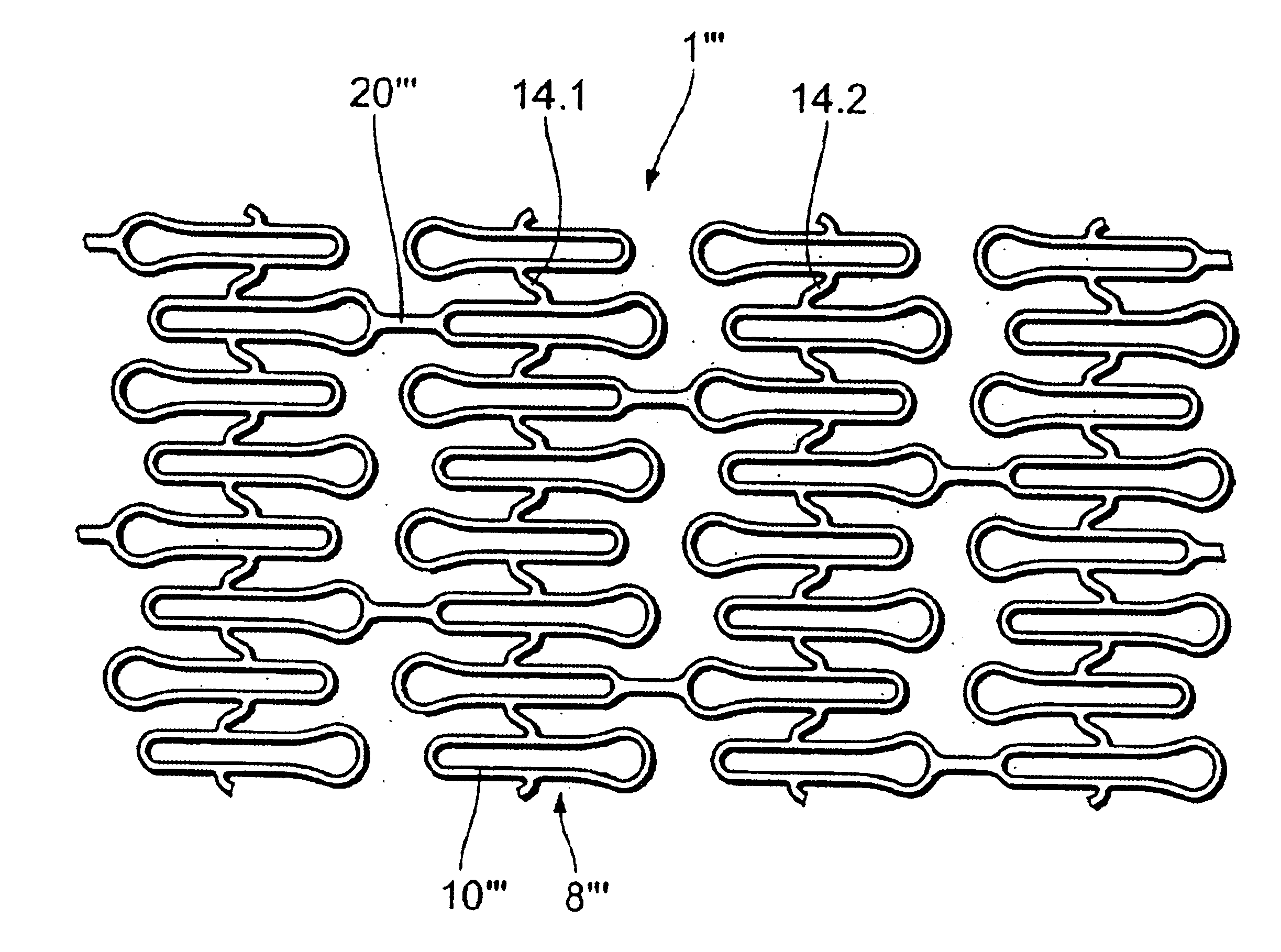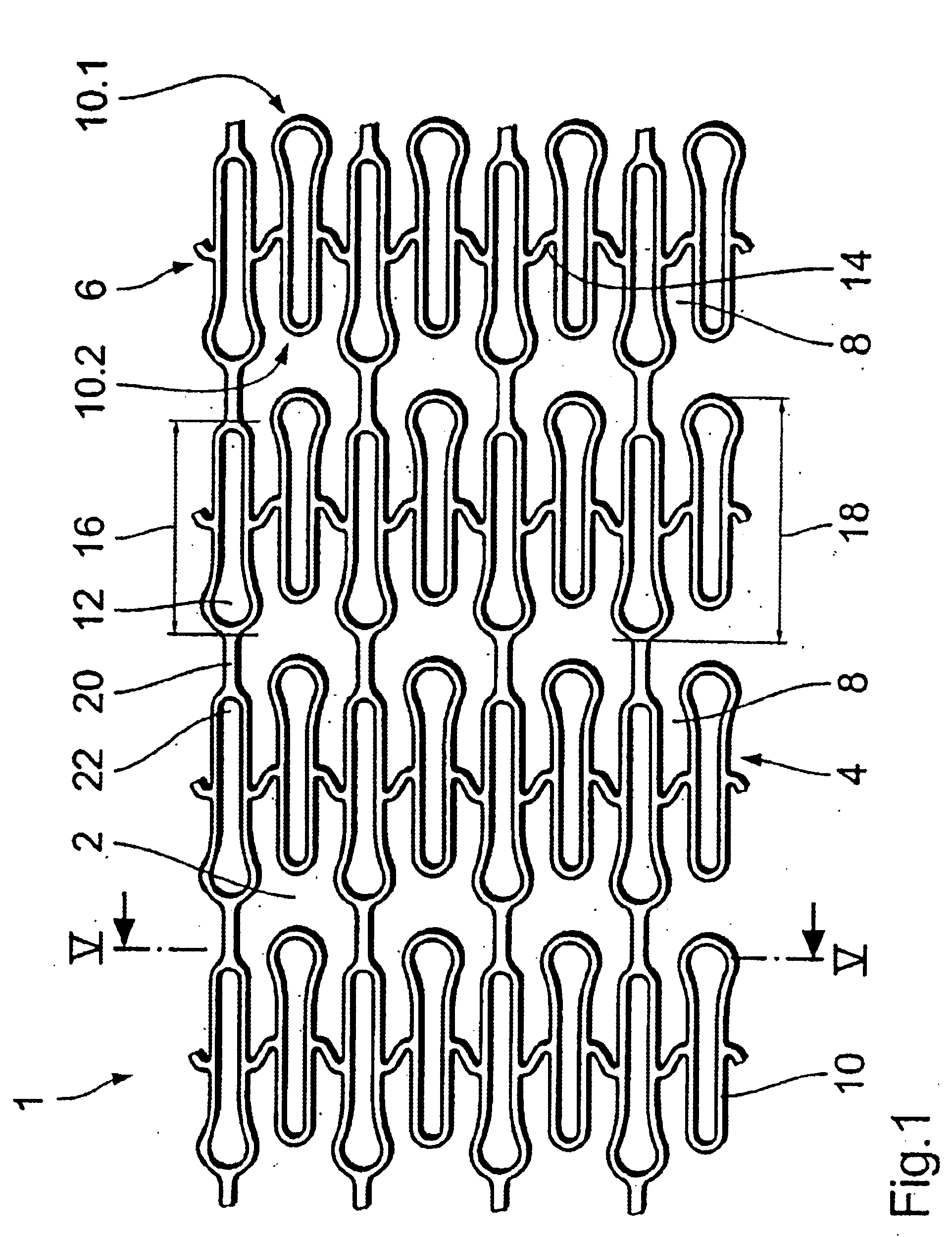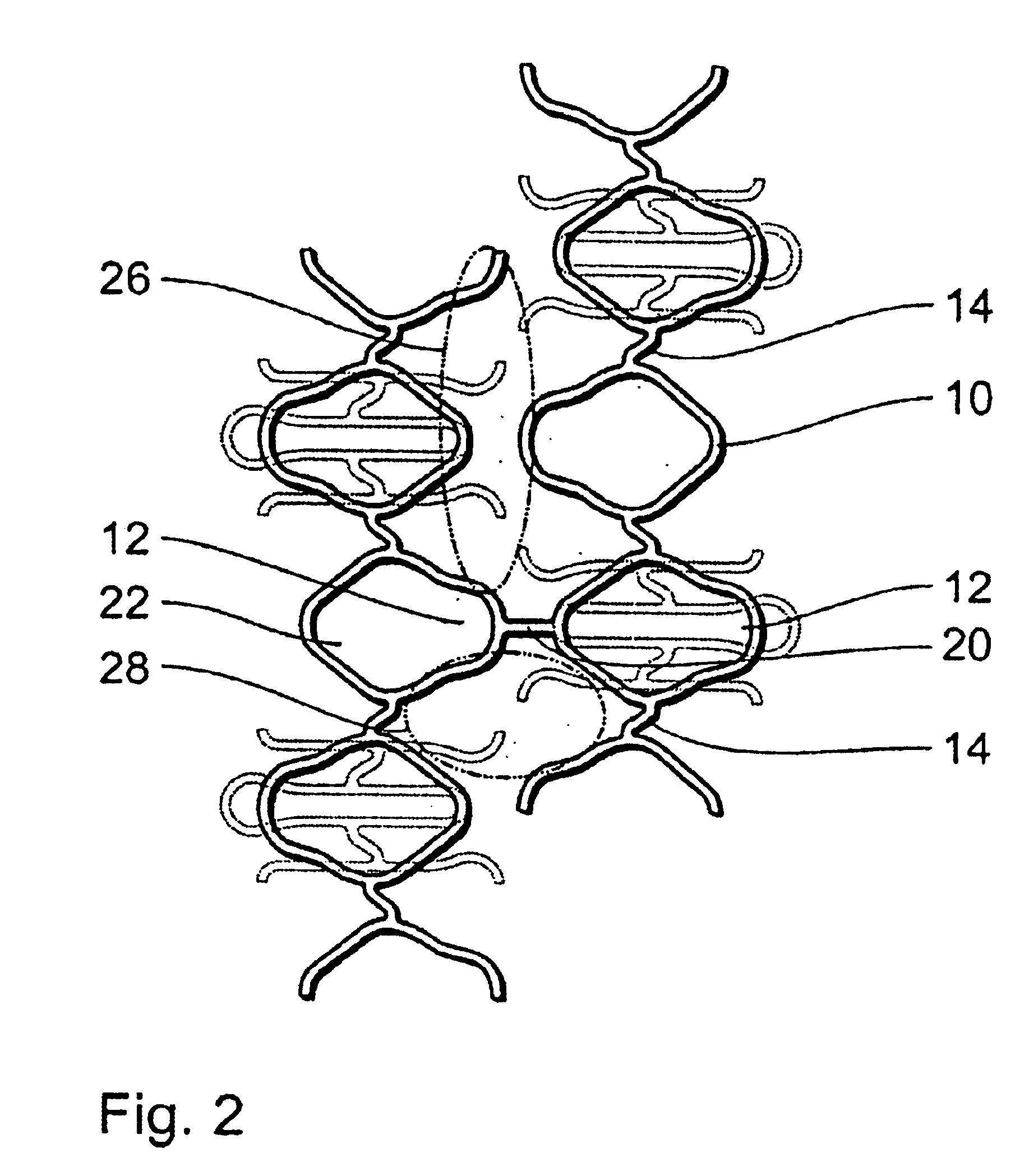Stent
- Summary
- Abstract
- Description
- Claims
- Application Information
AI Technical Summary
Benefits of technology
Problems solved by technology
Method used
Image
Examples
Embodiment Construction
[0045]FIG. 1 shows a stent 1 according to the invention. The stent 1 is shown in FIG. 1 in a form of a part of the development of its peripheral surface 2. In the condition of the stent 1 in which it is ready for operation, the peripheral surface 2 is connected with its side 4 which is shown at the bottom in FIG. 1 to the side 6 which is shown at the top in FIG. 1, thus affording the tubular stent 1 in the configuration in which it is ready for operation.
[0046]The peripheral surface 2 is composed of four tubular portions 8 which are also shown as a development in FIG. 1. In FIG. 1, each tubular portion 8 has eight cell-shaped elements 10 which are asymmetrical in the form of a keyhole and which have an orientation. In each tubular portion 8 the cell-shaped elements 10 are respectively arranged adjacent to each other in the peripheral direction of the stent, oriented with their longitudinal axes parallel to the longitudinal axis of the stent 1. Each element 10 involves an identical b...
PUM
 Login to View More
Login to View More Abstract
Description
Claims
Application Information
 Login to View More
Login to View More - R&D
- Intellectual Property
- Life Sciences
- Materials
- Tech Scout
- Unparalleled Data Quality
- Higher Quality Content
- 60% Fewer Hallucinations
Browse by: Latest US Patents, China's latest patents, Technical Efficacy Thesaurus, Application Domain, Technology Topic, Popular Technical Reports.
© 2025 PatSnap. All rights reserved.Legal|Privacy policy|Modern Slavery Act Transparency Statement|Sitemap|About US| Contact US: help@patsnap.com



